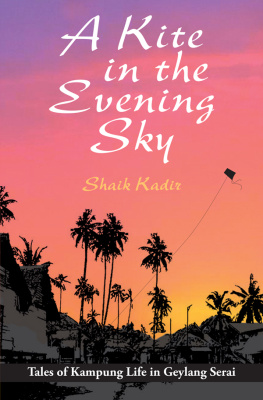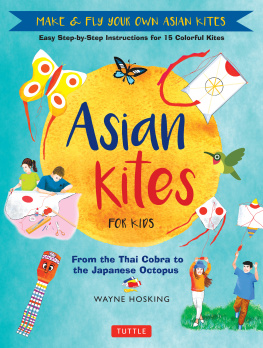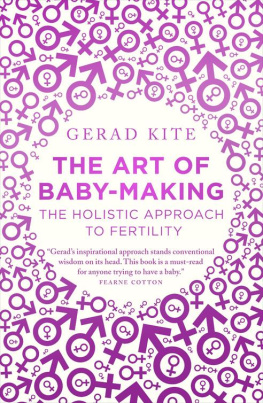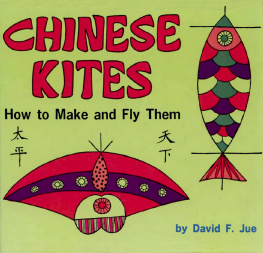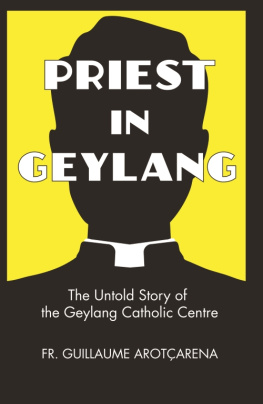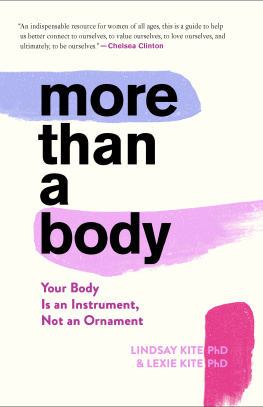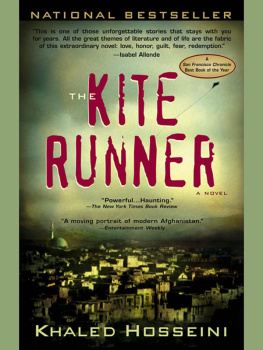Contents
Guide

2018 Marshall Cavendish International (Asia) Pte Ltd
Text Shaik Kadir
Photographs courtesy of the author and his family, except for images on . Cover design by Benson Tan.
All characters in the story, except Mohamed Noor, do not bear their real names.
A Kite in the Evening Sky was first published in 1989 by EPB Publishers.
This edition is published by Marshall Cavendish Editions
An imprint of Marshall Cavendish International

All rights reserved
No part of this publication may be reproduced, stored in a retrieval system or transmitted, in any form or by any means, electronic, mechanical, photocopying, recording or otherwise, without the prior permission of the copyright owner. Requests for permission should be addressed to the Publisher, Marshall Cavendish International (Asia) Private Limited, 1 New Industrial Road, Singapore 536196. Tel: (65) 6213 9300
E-mail:
The publisher makes no representation or warranties with respect to the contents of this book, and specifically disclaims any implied warranties or merchantability or fitness for any particular purpose, and shall in no event be liable for any loss of profit or any other commercial damage, including but not limited to special, incidental, consequential, or other damages.
Other Marshall Cavendish Offices: Marshall Cavendish Corporation. 99 White Plains Road, Tarrytown NY 10591-9001, USA Marshall Cavendish International (Thailand) Co Ltd. 253 Asoke, 12th Flr, Sukhumvit 21 Road, Klongtoey Nua, Wattana, Bangkok 10110, Thailand Marshall Cavendish (Malaysia) Sdn Bhd, Times Subang, Lot 46, Subang Hi-Tech Industrial Park, Batu Tiga, 40000 Shah Alam, Selangor Darul Ehsan, Malaysia
Marshall Cavendish is a registered trademark of Times Publishing Limited
National Library Board, Singapore Cataloguing-in-Publication Data
Name(s): Shaik Kadir.
Title: A kite in the evening sky / Shaik Kadir.
Description: [Third edition] | Singapore : Marshall Cavendish Editions, [2018] | First
published: EPB Publishers, 1989.
Identifier(s): OCN 1008862718 | eISBN 978 981 4794 85 5
Subject(s): LCSH: Kadir, Shaik. | Malays (Asian people)--Singapore--Social life and customs. | Geylang Serai (Singapore)--Social life and customs. | Singapore--History.
Classification: DDC 959.57--dc23
Printed in Singapore
Contents


Source: Ministry of Information and the Arts Collection, courtesy of National Archives of Singapore
Kampung houses: some had atap roofs, others zinc roofs and almost all stood on stilts.
Preface
Whenever Geylang Serai is mentioned, our minds instantly conjure up a picture of a busy commercial hub that has an abundance of delightful food, lovely clothing and exquisite handicraft.
What is less known is that Geylang Serai has always been bustling with people and activity even in the 1950s and 1960s. Back then, kampung houses, mud tracks and fruit trees filled the place. While it was physically different, the rural life of the former Geylang Serai was no less lively or charming.
Today, Geylang Serai has the glitter and glamour of city life. Kampung life has vanished, having faded into history with the urbanisation of Singapore, but its spirit remains. It is in the hope of capturing and conveying the unique and exciting flavour of the Geylang Serai kampung lifestyle that A Kite in the Evening Sky has come about.
First published in 1989, this book captures an authentic snapshot of the lifestyle, mood and worldviews of the kampung people, allowing readers today to consider what has changed and what has stayed the same.
A Kite in the Evening Sky traces the growth of a carefree boy who, amidst the challenges of kampung life, manages to fulfill the aspirations of his twice-widowed mother for a better life for the family. Besides depicting the kampung activities, the book brings out vividly the cultural and religious practices of the kampung folk of Geylang Serai and their close-knit community life that is today valued and cherished as the kampung spirit.
Prologue
It was a very hot day. I was up on a huge cherry tree in Maxwell Road Kindergarten. As I was stretching my hand to pluck a fat, red cherry, Muttu tapped my shoulder and, pointing to the far end of the road in the school compound, said, Your fathers coming.
I saw him cycling up the road to the school. I quickly got down the tree and ran towards him. I ran very fast. Suddenly I slipped and fell. My father rushed over to help me. I cut my left knee and had bruises on the other. Blood, as red as the tarboosh he was wearing, flowed from the cut. My father immediately drew out his handkerchief from his shirt pocket to stop the blood with it. As he was pressing the wound with his handkerchief, a few drops of blood fell onto his Pulikat sarung.
My father was the caretaker of the Shahul Hamid Shrine, commonly known as Nagore Dargah, which was situated at the corner of Telok Ayer Street and Boon Tat Street in Chinatown. I was born in the caretakers room and grew up playing in this big concrete building.
When I was six years old, my mother gave birth to a baby girl. Some time later, my father enrolled me at the Sepoy Lines Primary School in Tiong Bahru. Again, like when I was in the kindergarten in Maxwell Road, he sent me to school and took me home on his bicycle.
Even when my father fell ill, he still sent me to school and took me home by bus. Soon, however, his illness became serious, and I had to go to school and return home on my own.
One afternoon, I was sitting beside my father fiddling with his fingers when he turned on his side and suddenly became completely motionless. I shook his body violently, calling out loudly to him in a frightened voice. My mother who was in the kitchen came running to us, but my father was already dead. I cried the whole night. I even refused to go the following morning to the cemetery for the burial.
My mother had nobody in Chinatown. My maternal grandfather, whom I came to know for the first time, got us a room in his relatives house in Lorong H, Telok Kurau. I did not go to school for a few months after my fathers death. When we moved to Lorong H, I was enrolled into a Primary One class again the following year, in Telok Kurau English Primary School.
My mother later married a widower, an elderly Indian man. The marriage was arranged by my grandfather. Not many months after, my stepfather went to India to visit his relatives, saying he would return within a fortnight. But a week later, my grandfather broke a shocking piece of news to my mother. He said my stepfather had died in India. My mother looked worried. She told my grandfather that she was pregnant.
About this time, Hari Raya Aidiladha came and we went to visit a relative in Paya Lebar. That evening, my relatives neighbour wanted to take his child and a few other children for a car ride. My mother allowed me to go with them. Having never been in a car, I enjoyed the ride, although I felt a little uncomfortable as five other children were also sitting in the back seat. After a while, the breeze through the open windows made me fall asleep. When I woke up I became conscious of bandages on my leg and forehead. I was in a hospital!

